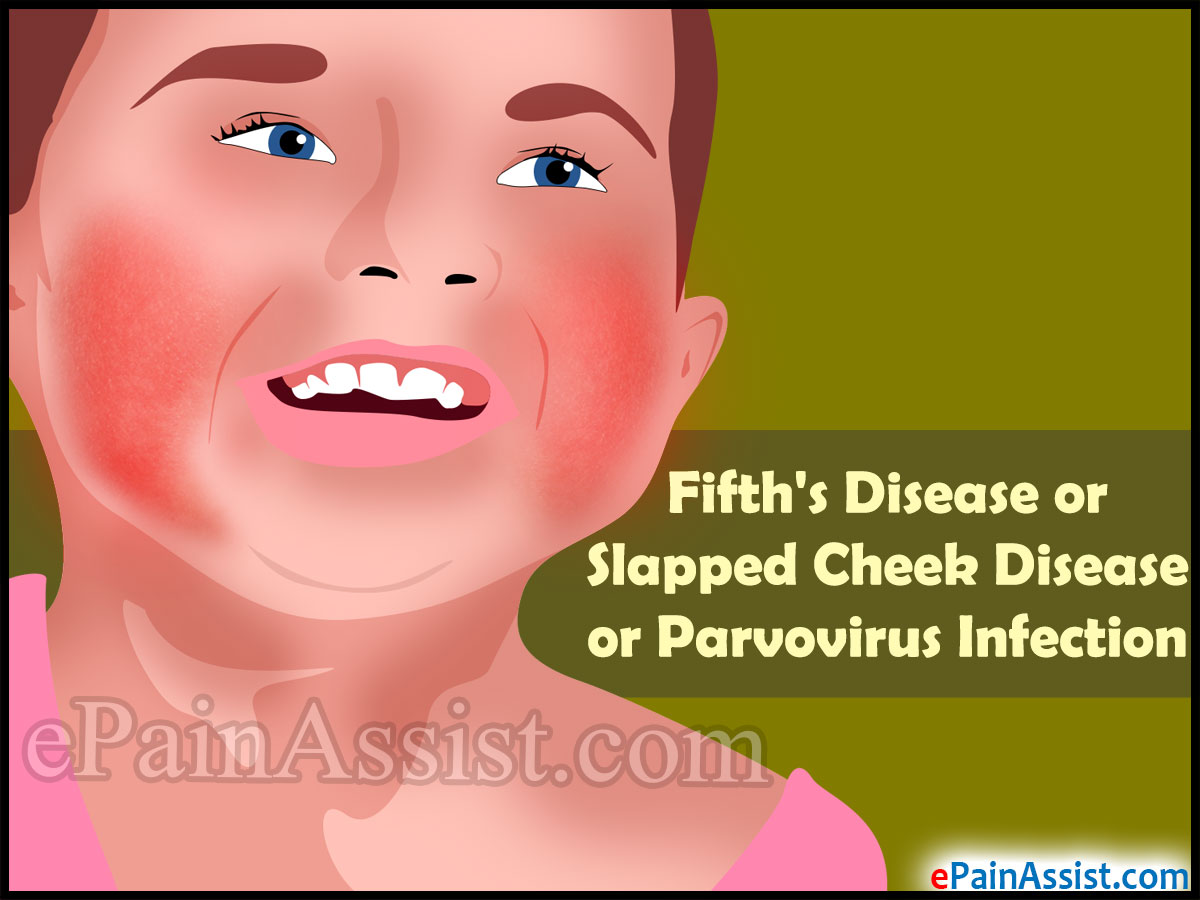Fifth’s disease is also called as Slapped Cheek Disease, Parvovirus infection and erythema infectiosum.
Fifth’s disease is recognized by the name Fifth’s disease, because it is one of the five frequently found diseases in children often characterized by a rash. Fifth’s disease is very general and highly contagious childhood disorder. Fifth’s disease sometimes may develop distinctive face rash due to which it is also known as the slapped-cheek disease.
Fifth’s Disease or Slapped Cheek Disease or Parvovirus Infection is noted to be contagious within a week before the appearance of the rash. After the appearance of the rash, the disease is no more contagious and the isolation of the patient is not required.
Most of the fifth’s disease cases are mild in nature and just some treatment is good enough for treating if suspected in children whereas in few cases of adults this infection could affect seriously. Individuals having compromised immune system or with few types of anemia may severely get affected with infection of fifth’s disease.

Fifth’s Disease or Slapped Cheek Disease or Parvovirus Infectionis a condition in which parvovirus B19 enters the body and attacks the erythroid progenitor cells present in the blood and bone marrow. Parvovirus B19 is an infection which specifically attacks the bone marrow and blood making this infection more severe for individuals who suffer from the disorders of bone marrow and blood.
Most of the symptoms of fifth’s disease such as red rash are caused by the antibodies released by the immune system to kill the virus and not by the virus itself.
Fifth’s disease is an infection caused by the human parvovirus B19. This virus is totally different than the parvovirus found in cats and dogs hence there are no chances of getting this infection from pets.
Epidemiology of Fifth’s Disease or Slapped Cheek Disease or Parvovirus Infection
Fifth’s disease generally affects children in the age group of 3 to 15 years. Fifth’s disease frequently develops during the early spring and late winter months.
Anyone can contract human parvovirus infection at anytime of the year, but it is most commonly seen in elementary school-age children during outbreaks in winter and spring months.
Pathophysiology of Fifth’s Disease or Slapped Cheek Disease or Parvovirus Infection
The development of fifth’s disease in children is the usual response to parvovirus B19 infection. The signs and symptoms of fifth’s disease are not likely from the virus itself, but are likely a result of deposition of the immune complexes in the joints and skin of the patients.
Causes of Fifth’s Disease or Slapped Cheek Disease or Parvovirus Infection
- Fifth’s Disease or Slapped Cheek Disease or Parvovirus Infection is a contagious disease and therefore spreads from one person to another just like cold, which often spreads through hand-to-hand contact and respiratory secretions.
- Infection may spread through sneezing and coughing, which may be inhaled by other individuals.
- Fifth’s disease may also spread by touching the infected surfaces and gets transferred into the body of other individuals by means of nose and mouth.
- Teachers and nursery workers or other people who work with children are also at risk of infection if they have not already had the infection earlier in their life.
Signs and Symptoms of Fifth’s Disease or Slapped Cheek Disease or Parvovirus Infection
Fifth’s Disease or Slapped Cheek Disease or Parvovirus Infection Symptoms In Children May Include:
- Upset stomach.
- Fatigue.
- Sore throat.
- Itching.
- Slight fever.
- Headache.
- A bright red distinctive facial rash may also appear often on both of the cheeks.
- A lacy, pink, slightly raised rashes eventually extending to the thighs, arms buttocks and trunk.
- The rash comes up towards the healing phase or when the disease spell is about to complete.
- Exacerbation of rash due to exposure to extreme temperature.
Fifth’s Disease or Slapped Cheek Disease Symptoms In Adults Include The Following:
- Joint soreness which lasts from days to sometimes weeks.
- The joints of knees, ankles, hands and wrists usually get affected with Fifth’s disease.
Treatment for Fifth’s Disease or Slapped Cheek Disease or Parvovirus Infection
Generally an uncomplicated fifth’s disease infection could be treated at home with self-care. Individuals suffering from severe anemia are hospitalized and require blood transfusions. Patients with weak immune system could be treated by receiving antibodies through immunoglobulin injections in order to treat the infection.
Investigations for Fifth’s Disease or Slapped Cheek Disease or Parvovirus Infection
Blood tests help to determine if an individual is prone to parvovirus or has already developed immunity to it. Individuals who have not developed immunity to parvovirus may be at risk of getting infected, especially if they come in contact with other infected patients.
- “Fifth Disease (Parvovirus B19).” Centers for Disease Control and Prevention (CDC). https://www.cdc.gov/parvovirusb19/fifth-disease.html
- “Fifth Disease (Erythema Infectiosum).” Stanford Children’s Health. https://www.stanfordchildrens.org/en/topic/default?id=fifth-disease-erythema-infectiosum-90-P01771
Also Read:
